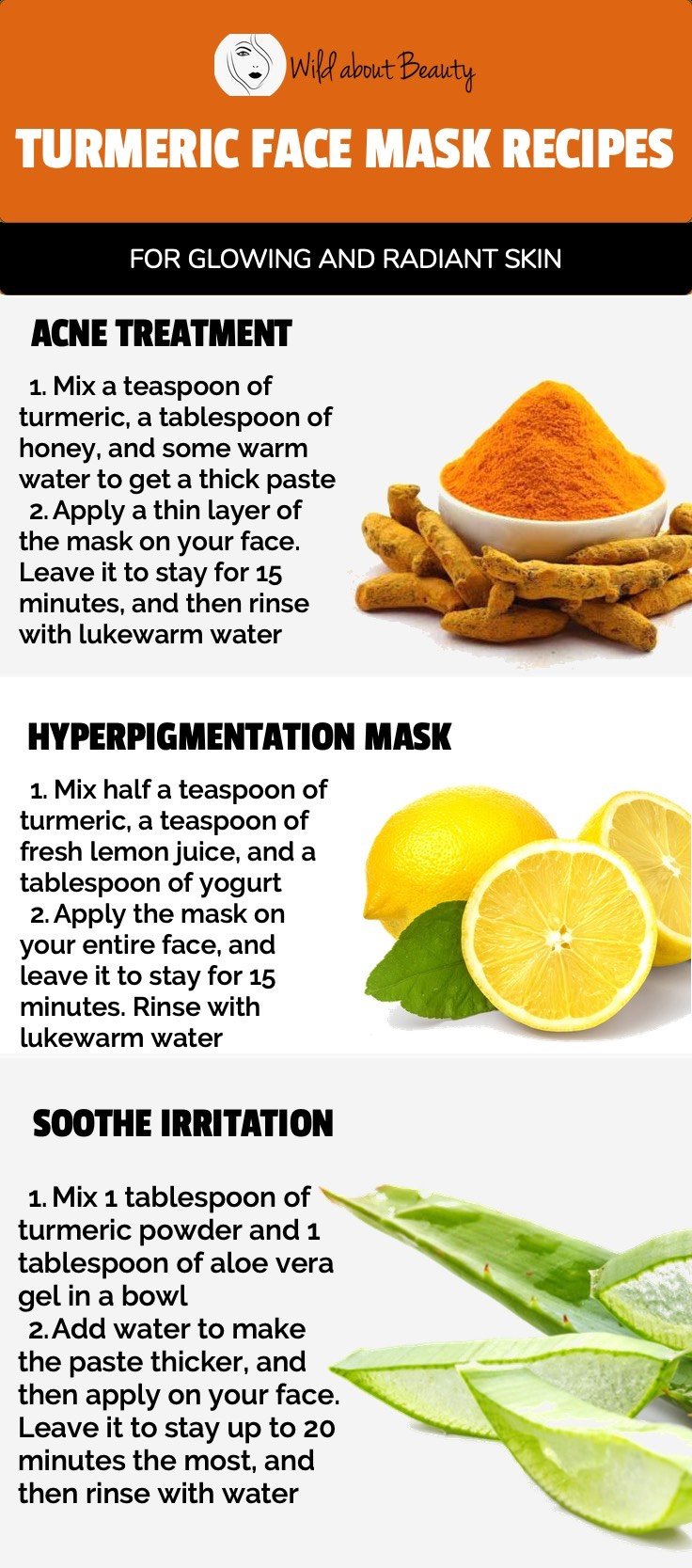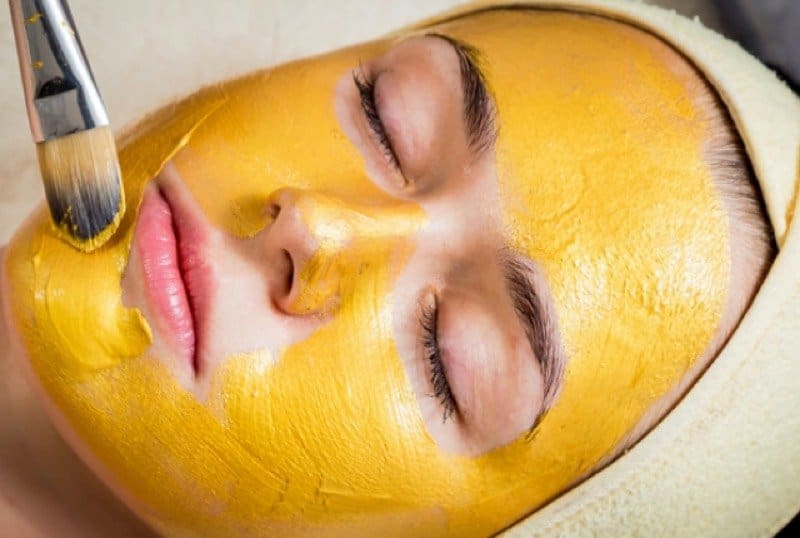Over the past decade, turmeric has transformed from a simple spice, primarily used in Asian cuisine, to a widely recognized ingredient with numerous benefits. Its applications now extend beyond the culinary world, with many embracing turmeric’s potential in beauty and skincare treatments, particularly in the form of face masks for radiant, glowing skin.
As turmeric continues to gain popularity, we find ourselves exploring its many advantages, from addressing skin concerns such as acne to enhancing the natural glow of our complexion. In this article, we’ll delve into the benefits of turmeric and guide you through creating your very own custom facial mask to improve your skin according to its type and your skincare routine.
Chapter Overview
Benefits of Turmeric
Turmeric, a powerful spice derived from Curcuma longa, offers numerous benefits for our skin. Let’s explore the many ways this remarkable ingredient enhances skin health.
- Anti-inflammatory: Thanks to active compounds called curcuminoids, turmeric effectively reduces inflammation and soothes various skin conditions.
- Antibacterial: Turmeric eliminates bacteria responsible for skin issues, helping to maintain a clear complexion.
- Acne treatment: Its anti-inflammatory properties make turmeric an excellent remedy for acne, cysts, pustules, papules, and nodules.
- Antioxidant: Rich in antioxidants, turmeric combats oxidative stress and protects our skin from free radicals, aiding in the fight against aging.
- Hyperpigmentation reduction: Turmeric evens out skin tone by reducing dark spots and hyperpigmentation.
- Topical soothers: When applied topically, turmeric minimizes skin irritation and redness.
- Anti-aging: Through its ability to diminish wrinkles and fine lines, turmeric serves as a valuable ally in our battle against aging.
Using turmeric as a regular part of our skincare routine can help us maintain radiant, healthy, and youthful-looking skin. With its potent healing properties, this powerful spice deserves a place in our beauty arsenal.
Are There Any Side Effects and Risks
We consider turmeric generally safe for both oral and topical use. However, oral supplements may cause gastrointestinal side effects like an upset stomach. For skin care, turmeric hasn’t shown any known adverse effects, but always perform a patch test before applying to your entire face. Discontinue use if you experience:
- Redness
- Swelling
- Itchiness
These symptoms could indicate irritation or an allergic reaction to the turmeric face mask.
Recipes For a DIY Mask

Turmeric As An Antioxidant Face Mask
Turmeric, when mixed with water, creates a simple yet powerful antioxidant face mask.
Instructions:
- Mix a teaspoon of turmeric with enough water to make a thick paste. You can also add almond flour for a thicker consistency.
- Apply the mask to your face and let it sit for 10 minutes.
- Rinse with warm water and apply moisturizer afterward.
Acne Treatment
Turmeric and honey create a potent acne treatment mask due to their antimicrobial and antibacterial properties.
Instructions:
- Mix a teaspoon of turmeric, a tablespoon of honey, and some warm water to create a thick paste.
- Apply a thin layer of the mask to your face and let it sit for 15 minutes.
- Rinse with lukewarm water.
Hyperpigmentation Mask
This mask combines turmeric with lemon and yogurt to help with pigmentation.
Instructions:
- Mix half a teaspoon of turmeric, a teaspoon of fresh lemon juice, and a tablespoon of yogurt.
- Apply the mask to your entire face and let it sit for 15 minutes.
- Rinse with lukewarm water.
Exfoliating Mask
Rose water and gram flour are added to turmeric for an exfoliating mask that will absorb excess oil and cleanse pores.
Instructions:
- Mix 1 tablespoon of turmeric powder and 2 tablespoons of gram flour. Add rose water to create a thick paste.
- Apply the paste to your face and let it sit for 10-15 minutes.
- Rinse with cold water, pat your face dry, and apply moisturizer if necessary.
Soothe Irritation
This soothing mask combines turmeric with aloe vera, which provides antimicrobial properties and helps alleviate skin irritation.
Instructions:
- In a bowl, mix 1 tablespoon of turmeric powder and 1 tablespoon of aloe vera gel.
- Add water to create a thicker paste and apply it to your face.
- Leave the mask on for up to 20 minutes before rinsing with water.
Turmeric Face Mask for Oily Skin
This mask, particularly beneficial for oily skin, combines turmeric with natural clay or rose water.
Instructions:
- Mix a teaspoon of turmeric powder and 2 tablespoons of natural clay. Add water to create a thick paste.
- Apply the paste to your face and let it dry. When dry, rinse with cool water.
Turmeric and Coconut Oil Mask
This mask, ideal for dry skin, combines turmeric with coconut oil to moisturize and help restore the natural oil balance of your skin.
Instructions:
- Mix 2 tablespoons of turmeric powder and enough coconut oil to create a thick, smooth paste.
- Gently apply the paste to your face using circular motions. Let it sit for 15 minutes.
- Rinse with water and repeat 2-3 times per week for severe acne issues.
Turmeric and Milk Mask
The milk and turmeric mask will help lighten and brighten your skin while nourishing it with vitamins and minerals.
Instructions:
- Mix 1 tablespoon of turmeric powder and enough milk to create a smooth paste.
- Apply the paste to your face and let it sit for 15 minutes.
- Rinse with lukewarm water.
Will a Turmeric Face Mask Stain My Face?
Fear not, as turmeric face masks will not turn your face yellow or orange. However, to prevent staining, we recommend:
- Applying a thin layer of the mask
- Avoid piling on too much product
By following these guidelines, you can enjoy the benefits of a turmeric face mask without worrying about stains.

